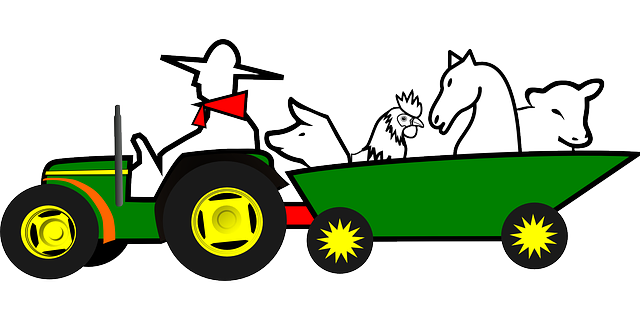Sirpa Sandelin, TkT, Yliopettaja; Kari Lilja, TkT, Erikoistutkija
English version: Click the link
Rapakon takaa lähdettiin hakemaan vähän suuren maailman meininkiä. Englanninkielisessä 5G-netin mainoksessa Jonathan Reed kysyy “Here in Finland you have to be truthful? Truthful? In advertising? Really? – Meillä Suomessa täytyy olla rehellisiä. Rehellisiä? Mainonnassa? Oletko tosissasi?” Toisessa mainoksessa sama herra toteaa ”Makes you wonder is Finland even real? – Pistää miettimään, onko Suomi edes todellinen paikka?”
Näihin suuren maailman kuvioihin menivät ajatukseni väkisinkin, kun törmäsin netissä kotikyläni markkinointiin yli 70 vuotta suomalaisena toimineen kiinteistövälityksen, joka oli osa pohjoismaiden suurinta kiinteistöalan konsernia ja palasi takaisin suomalaisomistukseen.

Miksi sitten kummastelen mainostekstiä? Katson, että 27 vuoden asumiskokemuksella osaan kommentoida kylän viehätystä, luontoa, palveluita, yhteisöllisyyttä ja asuntomarkkinoita. Tosin kokemusta on jo paljon pidemmältäkin ajalta: minulla on ollut jo pienestä saakka yhteydet kylään, kun isoäitini ja setäni perheineen asuivat siellä ja myöhemmin vanhemmillani oli mökki ja omakotitalo siellä ja vene ns. kalarannassa. Olen siis ollut todistamassa pitkän aikajakson aikana tapahtuneita muutoksia, joista kaikki eivät ole positiivisia. Luonto ja meri ovat lähellä, sillä metsään pääsen hyppäämällä takaovelta rajaojan toiselle puolelle. Se asia ei ole mihinkään muuttunut. Mitä nyt meri pakenee maankohoamisen takia noin 1 cm vuodessa.
Mainostekstissä on sanottu, että alue houkuttelee lapsiperheitä ja senioreja. Lapsiperheitä ei montaa ole, senioreja sen sijaan valtaosa asukkaista. Suurimmalla osalla senioreista on takana jo vuosikymmeniä asumista kylässä: keski-ikä lienee jo 70-vuoden tietämillä. Hoitokoteihin ei kylästä lähdetä ennen kuin on ihan pakko, eli kun kotihoito ei enää pysty vastaamaan hoitotarpeeseen.
Rauhallinen kylä on etenkin talvisin, kun kauempana olevaan niemeen ajavat mökkiläiset ovat teiltä poissa. Keväästä syksyyn ovat maa- ja metsätilallisten moottoriajoneuvot ja mökkiläisten maasturit liikkeellä. Viimeisimpien marraskuun 2024 myrskyjen tuhojen jälkien siivoamisessa tarvitaan edelleen metsäkoneita, kaivureita, haketuskoneita, puunkorjuurekkoja, jne. Nämä HCT (High Capacity Transport) -rekat, joiden pituus on jopa 34 metriä, kulkevat pääosin yöllä. Ja kuljetettavaa runkoa on myrskyjen jälkeen riittänyt. Sinänsä hyvä asia on, että HCT-rekkaralli on kustannustehokas ja ympäristöystävällinen, kun CO2-päästöt saadaan pienemmiksi. Alue on turvallinen, jos osaa varoa raskaita työkoneita ja ylinopeuksilla ajavia autoja. Lapset tuntevat traktorit paremmin kuin tavalliset automerkit. Katuvaloja ei syrjäisemmillä teillä ole. Mutta ei hätää, laitetaan autoon tehokkaat lisävalopaketit ja valaistaan puoli kylää.

Mainos väittää, että alueelta löytyy luonnonrauhaa ja palvelut ovat lähellä. Luonnonrauhaa riittää, mutta palveluista olen eri mieltä. Paikallinen peruskoulu lopetettiin 1990-luvun lopulla, jonka jälkeen koululaiset kuljetettiin samalla bussilla kouluun, joko toiseen 11 km päässä olevaan kylään tai kaupunkiin, jonne on matkaa 12 – 15 km. Koulukyyti on vuosien aikana muuttunut niin, että nyt bussi kuljettaa koululaiset vilkkaan pikatien laitaan, josta toinen bussi kuljettaa lähikouluun. Onneksi liityntäbussi sentään odottanee noutobussin tuloa. Turvallisuus onkin sitten jo toinen juttu. Bussilla pääsee kaupunkiin ja takaisin vain arkisin, eli bussit on yhdistetty koulukyytien mukaan vain koulujen työaikoihin. Bussi ei siis kulje koulujen loma-aikoina, eikä viikonloppuisin. Jos työpaikkasi on keskustassa ja työaikasi alkaa klo 8, ei bussilla pääse. Vastaavasti viimeinen bussi kylään lähtee keskustasta klo 15. Myöhemmin toki pääset, jos kävelet vähintään 6 km pikateiltä. Seniori voi siis tulla mökilleen bussilla kouluvuoden viimeisellä vuorolla kesäkuun alussa ja lähteä kouluvuoden alkaessa elokuun ensimmäisellä bussilla. Se siitä saavutettavuudesta. Kun vielä sekä lapsilla että vanhemmilla on harrastuksia, on oma auto välttämätön ja perheellä voi olla kaksi autoa. Mopoautot ja traktorimönkijät ovat kovassa käytössä heti kun laki sallii ajamisen. Basson jumputusta riittää, oli aika päivästä mikä tahansa.
Senioreillekin luvataan palveluiden olevan lähellä. Kauppaa ei kylässä ole ollut yli 40 vuoteen ja kauppa-autokin lakkasi kulkemasta liki 30 vuotta sitten. Lähimpään pikkukauppaan on matkaa ainakin 6 km, suurempaan markettiin 10 km. Ruokarobotti ei kylään saakka kulje, joten verkkokaupan kuljetuksen varassa on, ellei tukiverkkoa ole lähimailla. Lähimpään lääkäriin ja laboratorioon on matkaa noin 8 km. Jos autoa ei ole, millä kuljet, jos et saa käyttää KELA-taksia? Siinäkin omavastuu on 25 euroa per suunta. Pienestä eläkkeestä tuollaisia summia ei oteta. Postin palvelut on karsittu. Paketin voi noutaa ja postimerkin korttiin ostaa noin 6 km päästä. Lähin pubi on 7 km päässä, parturi samoin. Kirjastoauto on poikennut kylässä pari kertaa kuukaudessa, mutta kuinka kauan palvelu jatkuu? Löytyykö sitten jotain palveluita? Kirjastoauto on toiminut myös vaalien ennakkoäänestyspisteenä, tosin kysyntää ei pahemmin ole ollut. Viimeksi olin ainut – halusin testata, miten homma toimii. Lähikylän lihankasvattajalta voi tilata lihaa viikoittain, paikallinen kalastaja myy saalistaan, kun sitä saa ja palvaamon toriauto kiertää silloin tällöin. Talon kunnossapitoon löytyy muutamia yrittäjiä, osa niistäkin viereisestä kylästä, hyvinvointipalveluja tarjoaa, jos osaa hakea, yksi yrittäjä, muita palveluita saa vain netin kautta. Sekin on useammalle kylän seniorille tuntematon liittymämuoto. Se niistä palveluista.

Kylän asuntomarkkinat ovat mainostekstin mukaan monipuoliset. Jo vain. Kylästä löytyy omakotitaloja, joissa edessä on jätevesiremontti, ja kesämökkejä, joissa ei mukavuuksia juuri ole. Kylässä ei siis ole kunnallista jätevesiverkostoa, joten remontin yhteydessä on vesiasiatkin laitettava kuntoon. Mikään instanssi ei sitä kuitenkaan valvo. Rivitaloja tai kerrostaloja en tästä kylästä kyllä löydä. Olisi kiinteistönvälitys voinut edes tiedot tarkistaa paikan päällä käymällä. Tässä on varmaan käynyt nyt niin, että samalla postinumerolla on katsottu vain koko alue, jonka reunoilta sitten löytyy niitä rivitaloja, kerrostaloja ja palveluita.
Luonto, meri, kosteikot ja lintujen muuttoalueet ovat kylän ehdottomat vahvuudet. Tosin ns. kalarantaan voi paattinsa saada vain suhteilla tai sitten voi hyödyntää vierasveneille tarkoitettua luiskaa. Isolla paatilla ei rannasta tosin mihinkään pääse, niin matala lahdenperä on. Urheilukenttä kylästä löytyy, mutta markkinoinnin kohteena olevaa leikkipuistoa ei ole. Urheilukentällä on kuntoilupisteet, jääkenttä ja lyhyt hiihtolatu, jos talvi vaan on sopiva. Löytyy sieltä myös jätteiden (lue: materiaalien) kierrätyspiste, mutta liukkauden takia tyhjennys saattaa jäädä väliin. Retkeilyreitistäkin lopetettiin huolto viime syksynä. Vapaapalokunta ja urheiluseura sentään tarjoavat nuorille tekemistä.
Viimeinen kohta markkinointitekstissä, johon haluan puuttua, on yhteisöllisyys. Kylässä oli aikoinaan hyvä yhteishenki, mutta kyläläiseksi ei tulla kuin syntymän kautta. Yhteisön osaksi ei siis muualta tulleilla ole kovinkaan paljon mahdollisuuksia. Kalarannassa tosin järjestetään pieniä kylätapahtumia, mm. pääsiäisenä ja uutenavuonna, jos ei tuule ja risukasat ovat kuivaneet ja joku suostuu palovahdiksi. Kesäisin nokipannukahvit järjestetään kerran kuussa. Näissä tavataan muita kyläläisiä, mutta syvempiä jutusteluja ei ole. Sairaudet, vaikeudet ja juorut ovat puheenaiheista tärkeimmät. Viitisen vuotta sitten kylässä oli murtovarkaita, mutta kukaan ei ollut nähnyt eikä kuullut mitään. Mutta kun tulet työmatkalta kotiin mihin aikaan tahansa yöllä, on joku aina näkemässä ja juoruamassa että se tuli taas jostain siihen aikaan…

Omissa oloissaan täällä kuitenkin saa olla. Kylässä asuminen vaatii kieltämättä luonnetta. Vaikka negatiivissävytteisiä asioita on paljon, on asioihin osattava sopeutua. Lumisateen jälkeen kolaat pihatien, että pääset auraamattomalle tielle ja toivot, että et jää matkalla kiinni lumeen. Kauppareissun teet kerran viikossa, joten kylmätilaa tarvitaan. Nettilinja toimii heikosti, joten palavereissa on kamera pidettävä kiinni (onneksi). Polttopuita hommataan keväällä, jotta sähkölaskua saisi pienemmäksi. Sähkölinjat saatiin pääosin maan alle vuoden 2011 Tapani-myrskyn jälkeen, mutta aina silloin tällöin sähköt häviävät: onneksi vain alle tunniksi, kun Tapanin aikana oltiin sähköttä kolme päivää. Mutta positiiviset asiat, lenkkipolut, luonnoneläimien näkeminen, hyvä ilma, marjojen poiminta ja sienien kerääminen antavat voimaannuttavia kokemuksia. Sillä jaksaa puurtaa eteenpäin.
Palataan vielä alun rapakontakaiseen meininkiin, jota tässäkin kiinteistönvälityksen mainonnassa näen. Varmasti teksti viehättää ja herättää kiinnostuksen, mutta kuvaako se alueen rehellisesti? Onko kylää edes olemassa? Testasin mitä kaikkivoipa tekoäly kylästä kertoo, ja sen antama kuvaus oli totuudenmukaisempi: ”Asuinalueena kylä on rauhallinen ja perheystävällinen, ja siellä on yhdistelmä maaseutumaista idylliä sekä meren läheisyyden tuomaa charmia. Alueella on kuitenkin myös hyvä yhteys kaupungin muihin osiin, mikä tekee siitä houkuttelevan paikan niille, jotka arvostavat luonnonläheisyyttä mutta haluavat pysyä lähellä kaupungin palveluita”. Apuja markkinointiin kannattaisi siis pyytää tekoälyltä!
English version
A village for families with children and seniors – the illusion of the marketing text
We went behind the ocean to get a little bit of the big world vibe. In an English-language 5G internet advertisement, Jonathan Reed asks “Here in Finland you have to be truthful? Truthful? In advertising? Really? – We have to be honest in Finland. Honest? In advertising? Are you serious?” In another advertisement, the same gentleman states “Makes you wonder is Finland even real? – Makes you wonder if Finland is even a real place?”
My thoughts were forced to these visions of the big world when I came across an online marketing of my home village by a real estate agency that had been operating as a Finnish company for over 70 years, a company which was part of the largest real estate group in the Nordic countries and returned to Finnish ownership.

Thus, why am I wondering about the advertising text? I think that with 27 years of living experience, I can comment on the village’s charm, nature, services, sense of community and the housing market. Although the experience goes back much further: I have had connections to the village since I was a child, when my grandmother and uncle lived there with their families and later my parents had a cottage and a detached house there and a boat on the so-called fishing beach. Thus, I have witnessed changes that have taken place over a long period of time, all of which have not been positive. Nature and the sea are close by, because I can get into the forest by jumping from the back door and over the ditch. That has not changed at all. What is the sea now escaping due to land uplift at about 1 cm per year.
The advertising text says that the area attracts families with children and seniors. There are not many families with children, but the majority of residents are seniors. Most seniors have lived in the village for decades: the average age is probably around 70. People do not leave the village for nursing homes until it is absolutely necessary, that is, when home care can no longer meet the need for care.
The village is peaceful especially in winter, when the cottagers who drive to the more distant peninsula are off the roads. From spring to autumn, motor vehicles from agricultural and forestry farms and the cottagers’ SUVs are on the move. Forestry machines, excavators, chippers, logging trucks, etc. are still needed to clean up the damage caused by the most recent storms in November 2024. These HCT (High Capacity Transport) trucks, which are up to 34 meters long, mainly travel at night. And there has been enough logs to be transported after the storms. The good thing in itself is that the HCT truck rally is cost-effective and environmentally friendly, as CO2 emissions are reduced. The area is safe if you can watch out for heavy machinery and cars driving at high speeds. Children know tractors better than regular car brands. There are no street lights on the smaller roads. But don’t worry, we’ll put efficient additional light packages in the car and light up half the village.

The advertisement claims that the area is surrounded by nature and services are nearby. There is plenty of nature, but I disagree about the services. The local comprehensive school was closed in the late 1990s, after which the schoolchildren were transported to school by the same bus, either to another village 11 km away or to a city 12–15 km away. The school bus schedule has changed over the years so that now the bus transports schoolchildren to the side of a busy expressway, from where another bus takes them to the local school. Fortunately, the connecting bus is probably waiting for the pick-up bus to arrive. Safety is another matter. The bus can only take you to and from the city on schooldays, meaning that the buses are only connected to school hours according to school buses. The bus does not run during school holidays or on weekends. If your workplace is in the city center and your work hours start at 8 am, you cannot take the bus. Similarly, the last bus to the village leaves the city centre at 3 pm. You can get there later, of course, if you walk at least 6 km from the highway. Thus, a senior citizen can come to their cottage by bus on the last shift of the school year at the beginning of June and leave by the first bus in August when the school year starts. That’s accessibility. When both children and parents still have hobbies, their own car is essential, and a family can have two cars. Mopeds and tractor-quad bikes are in heavy use as soon as the law allows driving. There is enough pounding of bass to get a workout, no matter what time of day it is.
Seniors are also promised that services will be close by. There hasn’t been a shop in the village for over 40 years and the mobile shop stopped running almost 30 years ago. The nearest small shop is at least 6 km away, and the larger market is 10 km away. The food robot doesn’t go all the way to the village, so you have to rely on online shopping for transportation unless there is a support network nearby. The nearest doctor and laboratory are about 8 km away. If you don’t have a car, how do you get around if you can’t use a KELA taxi? There is also a deductible of 25 euro per way in KELA-Taxi. Small pensions don’t charge that much. Postal services have been cut back. You can pick up a package and buy a stamp on your card about 6 km away. The nearest pub is 7 km away, as is the barber. The mobile library has stopped in the village a couple of times a month, but how long will this service continue? Will there be any services then? The bookmobile has also served as an advance voting point for elections, although demand has not been huge. I was the only one last time – I wanted to test how it works. You can order meat from a local meat farmer every week, a local fisherman sells his catch when he gets it, and the market van of the curehouse makes the rounds randomly. There are a few entrepreneurs for house maintenance, some of them from the neighbouring village, one entrepreneur offers wellness services if you know how to apply, and other services are only available online, that is also an unknown form of communication for several of the village’s seniors. That’s all of those services.

According to the advertising text, the village’s housing market is diverse. Just that. There are detached houses in the village that are about to have their sewage system renovated, and summer cottages that have almost no amenities. There is no municipal sewage system in the village, thus, the water system also has to be fixed to complete the requirements of the legislation in connection with the renovation. However, no authority supervises it. I can’t find any townhouses or apartment buildings in this village. The real estate agency could have even checked the information on site. It must have happened here that only the entire area with the same postal code has been looked at, and then those townhouses, apartment buildings and services can be found on the edges.
Nature, the sea, wetlands and bird migration areas are the village’s absolute strengths. Although you can only get your boat to the so-called fishing beach with a permit, or you can use the ramp intended for guest boats. You can’t get anywhere from the beach with a large boat, the head of the bay is so shallow. There is a sports field in the village, but there is no playground that is the subject of marketing. The sports field has fitness equipment, an ice rink and a short ski slope, if the winter is suitable. There is also a waste (read: materials) recycling point there, but emptying may be missed due to the slippery conditions. Maintenance of the hiking trail was also stopped last autumn. At least the volunteer fire brigade and the sports club offer things for young people to do.
The last point in the marketing text that I want to address is community. There used to be a good community spirit in the village, but you can only become a villager by birth. Thus, people who come from elsewhere don’t have many opportunities to become part of the community. Small village events are organised in Kalaranta, for example at Easter and New Year’s, if there is no wind and the piles of twigs have dried up and someone agrees to be a fire watchman. In the summer, soot-pan coffees are organised once a month. You meet other villagers at these, but there is no deeper conversation. Illnesses, difficulties and gossip are the most important topics of conversation. About five years ago there were burglars in the village, but no one had seen or heard anything. But when you come home from a work trip at any time of the night, there is always someone there and gossiping that it happened again at that time…

However, you can be here on your own terms. Living in the village undoubtedly requires character. Although there are many negative things, you have to be able to adapt to things. After a snowfall, you crash down the driveway, only to end up on an unplowed road and hope that you don’t get stuck in the snow on the way. You go shopping once a week, so you need a cold room. The internet connection is poor: you have to keep the camera turned off during meetings (fortunately). Firewood is procured in the spring to lower the electricity bill. The electricity lines were mainly brought underground after the 2011 Tapani storm, but every now and then the electricity goes out. Fortunately, in most cases only for less than an hour, but during Tapani-storm 26th December 2011 we were without electricity for three days. However, the positive things, the jogging trails, seeing wild animals, good air, picking berries and mushrooms provide empowering experiences. It gives you the energy to keep pushing forward.
Let’s go back to the raucous atmosphere at the beginning, which I also see in this real estate agency’s advertising. The text is certainly attractive and arouses interest, but does it describe the area honestly? Does the village even exist? I tested what the omnipotent artificial intelligence says about the village, and the description it gave was more truthful: ”As a residential area, the village is peaceful and family-friendly, and there is a combination of rural idyll and the charm brought by the proximity of the sea. However, the area also has good connections to other parts of the city, which makes it an attractive place for those who value being close to nature but want to stay close to city services.” Thus, it would have been worth asking artificial intelligence for help with marketing!
Artikkeli on kirjoitettu Euroopan unionin Erasmus+-ohjelman rahoittaman WIN4SMEs-hankkeen puitteissa. Vastuu artikkelissa esitetyistä näkemyksistä on yksinomaan kirjoittajilla.
This article was written in the framework of the project Win4SMEs funded by Erasmus+ programme of the European Union. The sole responsibility for the views expressed in this article lies with the authors.

